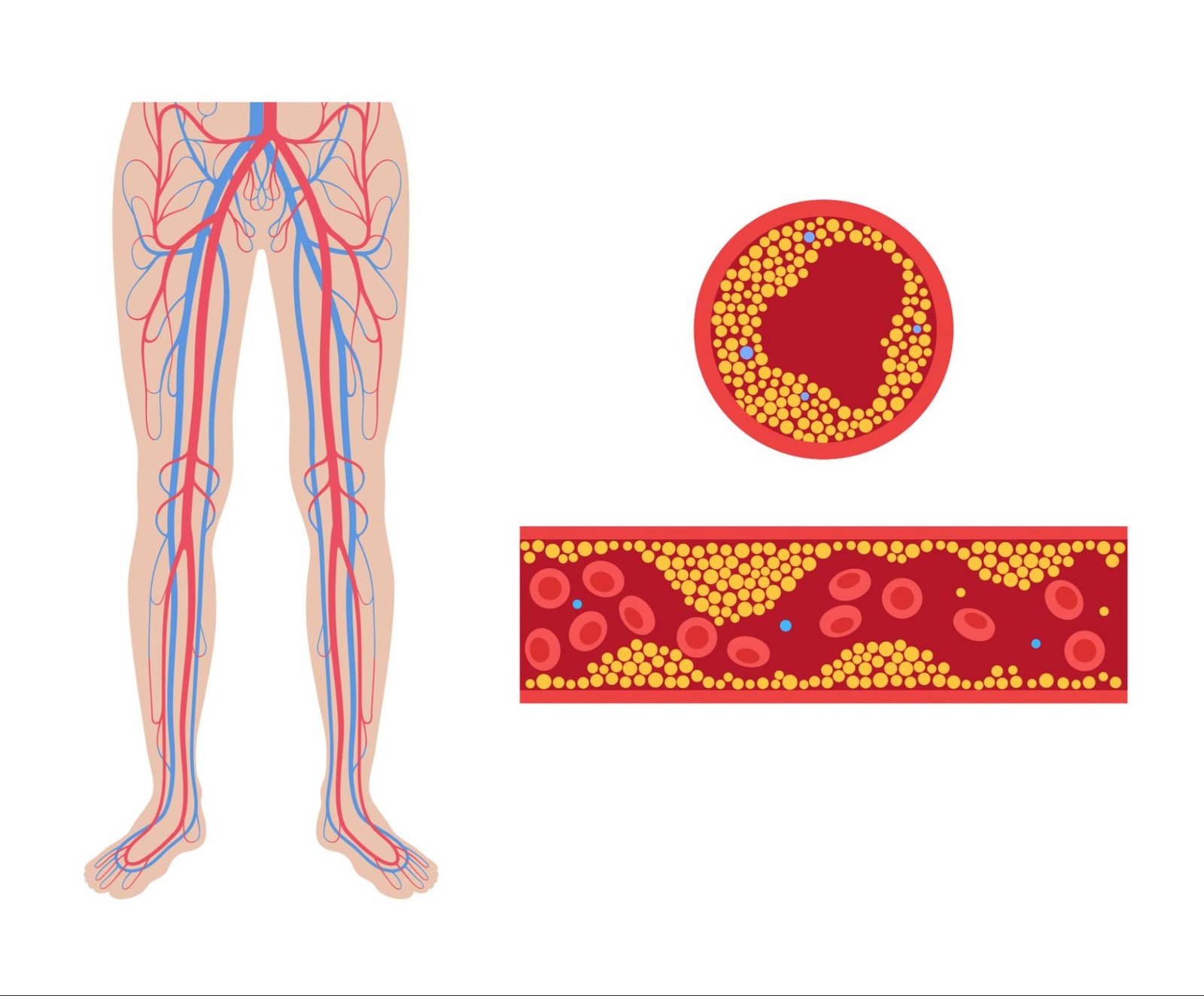Peripheral Arterial & Venous
Peripheral arterial and venous diseases refer to conditions that affect the blood vessels outside the heart and brain — mainly in the legs, arms, and abdomen.
Peripheral Arterial Disease (PAD) occurs when arteries that carry oxygen-rich blood to the limbs become narrowed or blocked, usually due to plaque buildup (atherosclerosis).
Peripheral Venous Disease (PVD) affects the veins, impairing the return of blood to the heart, often causing varicose veins, chronic venous insufficiency, or deep vein thrombosis (DVT).

Types of Peripheral Arterial & Venous Conditions
Peripheral Arterial Disease (PAD)
Chronic Venous Insufficiency (CVI)
Deep Vein Thrombosis (DVT)
Varicose Veins
Superficial Thrombophlebitis
Arterial Aneurysms
Symptoms of Peripheral Arterial & Venous Disease
Leg pain or cramping, especially during walking (claudication)
Numbness, weakness, or coldness in the legs or feet
Non-healing wounds or ulcers on the feet or toes
Swelling, heaviness, or aching in the legs
Skin discoloration or varicose veins
Rest pain in the feet, especially at night
What Are Some Common Uses of the Procedure?
Peripheral arterial and venous evaluations help to:
Diagnose blockages or narrowing in arteries
Assess vein function and detect blood clots
Evaluate varicose veins or chronic swelling
Monitor patients with known vascular disease
Guide treatment decisions, such as stenting, angioplasty, or surgery
How Do I Prepare for My Peripheral Arterial & Venous Test?
Wear comfortable, loose-fitting clothes
Avoid applying lotions or oils on your legs
Follow any specific instructions from your doctor (such as fasting, if required)
Bring a list of your medications and past medical history
What Will Happen During My Peripheral Arterial & Venous Test?
During the test:
You will lie on an examination table while the technologist uses an ultrasound probe with gel to scan the arteries or veins in your limbs.
Blood pressure cuffs may be placed on your arms or legs to assess blood flow.
The procedure is painless, non-invasive, and typically takes 30 to 60 minutes.
You can usually resume normal activities immediately after.
What Are the Reasons for a Peripheral Arterial & Venous Test
Doctors recommend this test to:
Identify the cause of leg pain or swelling
Check blood circulation in people with diabetes or cardiovascular disease
Assess risk before surgery
Monitor known arterial or venous conditions
Detect early signs of vascular disease in at-risk individuals
